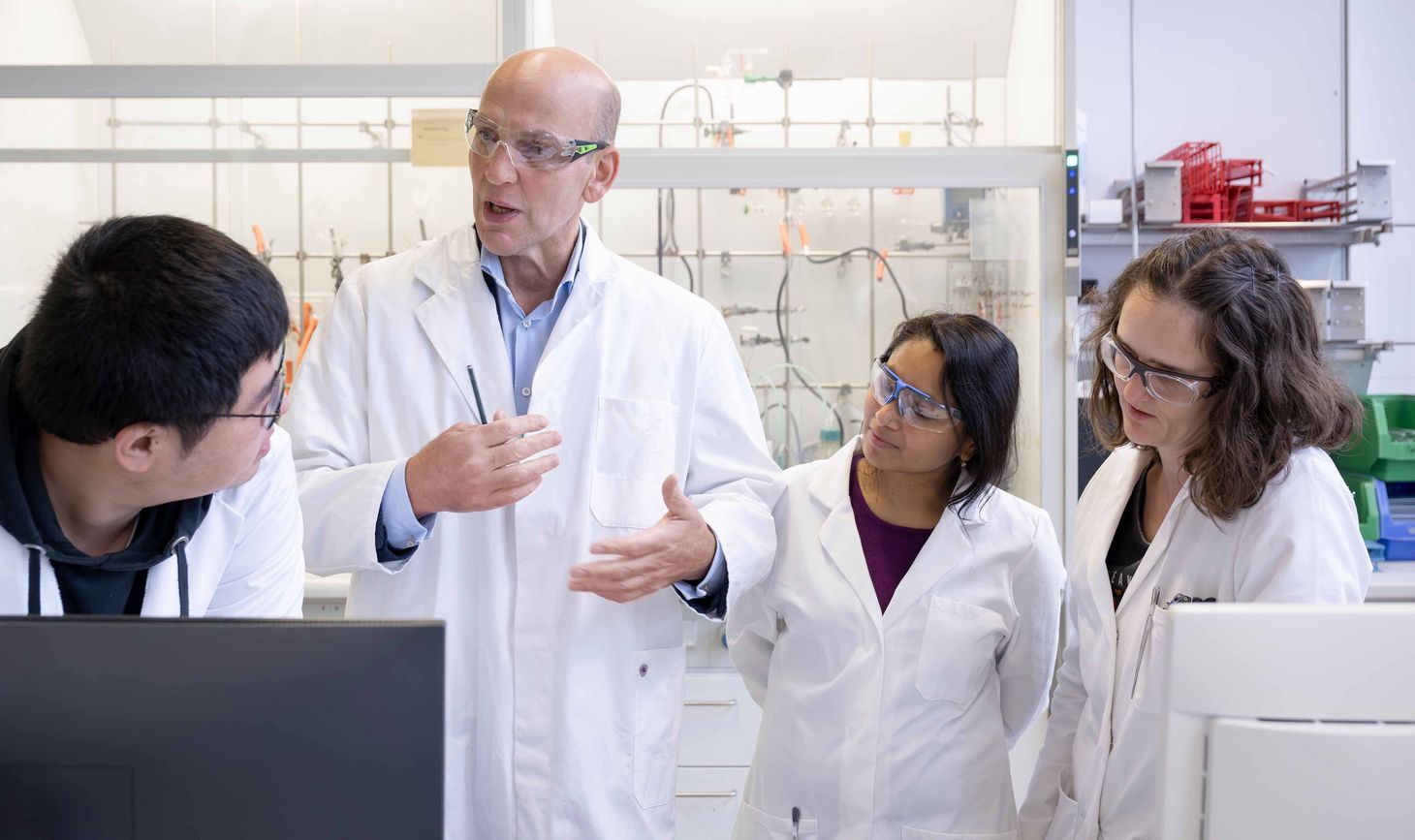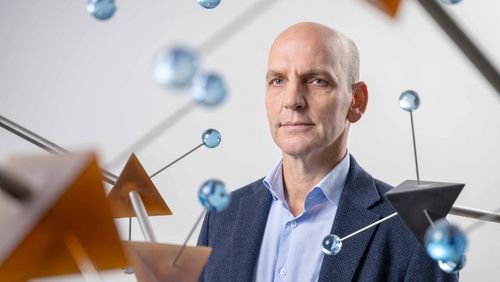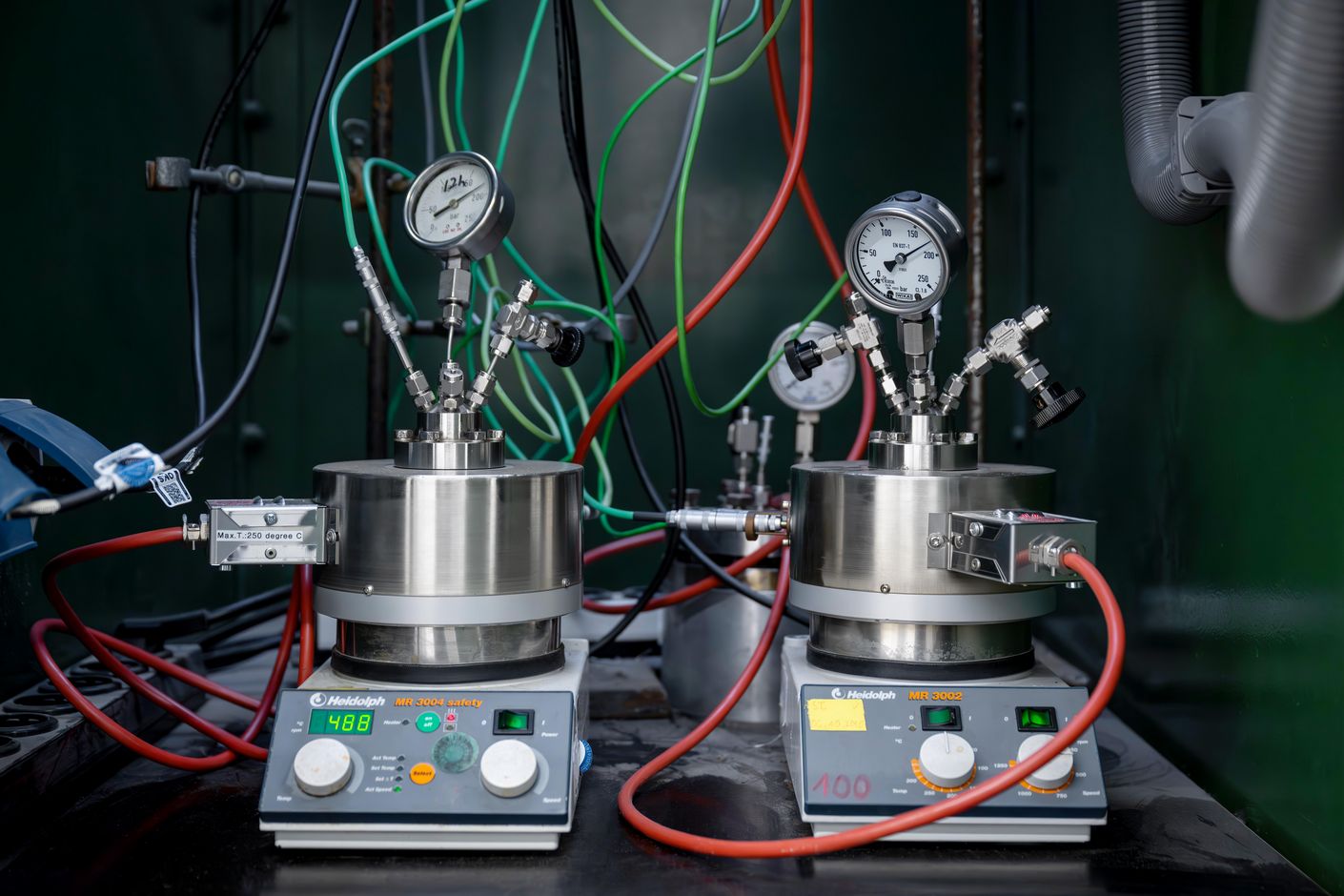
“It would be the core of photosynthesis”
Plants have been removing carbon dioxide from the atmosphere for millions of years—and now, Nobel laureate Benjamin List, director at the Max-Planck-Institut für Kohlenforschung in Mülheim an der Ruhr, is aiming to develop an elegant chemical reaction that imitates the basic principle of photosynthesis. The potentially world-changing technology is the focus of a project that was recently awarded funding from the Werner Siemens Foundation.
Professor List, in your new project, which was recently awarded a ten-year grant from the Werner Siemens Foundation, you’re seeking to develop a kind of artificial photosynthesis. What does this work entail?
Well, the project is in fact about imitating photosynthesis in plants. Plants convert carbon dioxide (CO2) and water into carbohydrates—cellulose, for example—and oxygen is produced in the process. My original idea was to use a type of direct chemical photosynthesis to manufacture a synthesis gas consisting of carbon monoxide (CO) and hydrogen (H2), which could be used to produce fuel. But then I realised there’s a Swiss start-up that’s already working on that exact process.
Synhelion?
Yes. They’re using catalysts and sunlight to directly produce fuels from CO2 and water. It’s a great idea, and the company is collaborating with businesses like the airline SWISS to supply part of their jet fuel from sustainable sources. However, it’s still an insignificant percentage, and what’s really tragic is that even if the fuel for every car, plane and ship in the world were produced sustainably, we still wouldn’t be able to stop climate change.
Why not?
Humans are emitting some fifty-two billion tons of carbon dioxide equivalents every year. But in the form of fuel, we only use roughly one billion metric tons. That means we ultimately have to remove much, much more CO2 from the atmosphere.
So you decided to develop a different approach?
That’s right. Although I have to say that it’s currently still more of an idea than an approach. But the general thrust is to remove the water molecules that are on either side of the chemical photosynthesis equation. Using light energy, carbon dioxide (CO2) would then be transformed into pure carbon (C) and oxygen (O2). In other words, it would be the core of photosynthesis.
What advantages would the process have?
Should the idea work, the conversion into carbon would deliver the basis for making the chemical industry completely sustainable. All organic materials can be produced from carbon, we already have the necessary technology. We could use this solar coal to manufacture fuel by applying the Fischer-Tropsch process—which, incidentally, was developed here at the Max-Planck-Institut für Kohlenforschung one hundred years ago. Of course, this solar coal would also be burnt emission-free or used to generate electric power. And a last point is most important.
What would that be?
To capture enough carbon dioxide from the atmosphere, we need to produce much more solar coal than we can possibly use. And even if we used it to fabricate every single chemical product and all imaginable kinds of fuels, there would still be a great deal of surplus coal. However, it would be easy to bury the excess amount in the ground—here in Germany’s Ruhr valley, for example. When I look out my office window, I see huge spoil tips from the coal industry. Beneath these massive mounds are enormous caverns where coal was excavated. Maintaining these underground caverns and old mining shafts costs a lot of money: they could sink or collapse, and it’s important to ensure that no problems are caused by water flows and groundwater. Refilling the disused tunnels with coal would be an ideal solution.
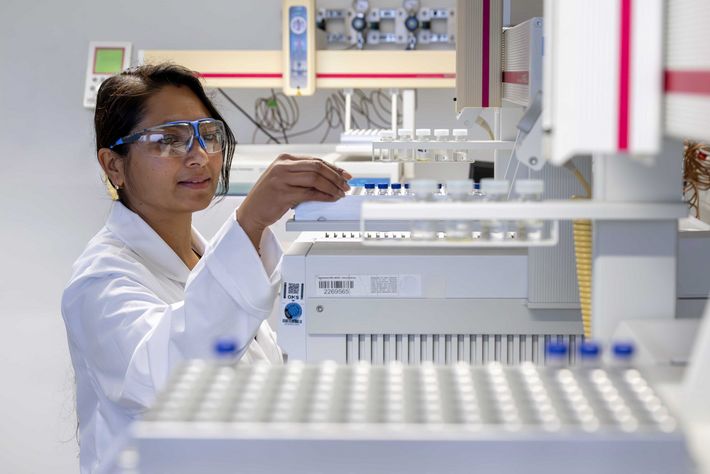
“It would be easy to bury the coal in the ground.”
Does that mean the underground storage of pure coal would be much easier than the carbon capture and storage methods most often proposed?
Yes! Transporting coal is simple. And it’s a solid—pressing a gas like CO2 into the earth and storing it there is much more difficult.
Your approach sounds promising, but you yourself say that the reaction has yet to be realised. How extensively has the reaction pathway of CO2 to carbon and oxygen been studied?
Basically not at all. There’s hardly any information in the literature. Really, it seems that the idea has been more or less overlooked. Or—and this is what I think when I’m having a hard time sleeping—most chemists are smart enough to know that the reaction will never work. But things always look different in the morning, and I tell myself that revolutionary discoveries tend to stem from mad ideas.
What’s so crazy about the idea?
We all know that coal burns well when oxygen is present. The planned reaction would take the opposite route—we want to reverse the process, as it were. Initially, that sounds pretty far out. But upon taking a closer look, it becomes apparent that, although the amounts of energy required are shockingly large—at some ninety-four kilocalories per mole—it’s still less than what’s consumed during photosynthesis. In other words, the plant process is more energy-intensive than our chemical reaction.
Does anything else make you feel confident about the project?
Yes, the fact that this reaction is already happening now, as we speak. In the atmosphere of Mars, for example, but also in the atmosphere of our own planet. After all, oxygen was already present in the atmosphere before the first photosynthetic organisms existed. Here the big question was where the oxygen came from. A few years ago an answer was found: experiments proved that CO2 can be split into C and O2 using very strong, high-energy UV light. The core part of my idea is to catalyse this reaction so that it needs less energy.
What ideas do you have for catalysing the reaction?
One thought is as follows: during the reaction, a solid—coal—is formed from the gas phase—carbon dioxide. If coal builds up on the surface of the catalyst, at some point the catalyst will be automatically deactivated. Such a deposition reaction also occurs when hydrogen is produced from methane. In that case, methane gas is conducted through hot, liquid tin. The hydrogen bubbles up at the top, while the coal is deposited on the tin. Then, a type of windscreen wiper is used to remove the coal from time to time.
And you could apply the same principle to your reaction?
Exactly. That’s how we always proceed with ideas based in so-called heterogeneous catalysis. However, the details are complex. And, of course, secret for now.
Are there other ways to attain the desired reaction?
Another fascinating approach we’re pursuing is biocatalysis. We’re thinking about microorganism consortia in seawater that could transform CO2 from air into coal. The resulting carbon may rise to the water’s surface, where it could be skimmed off. I’m recruiting biologists for this part of the project.
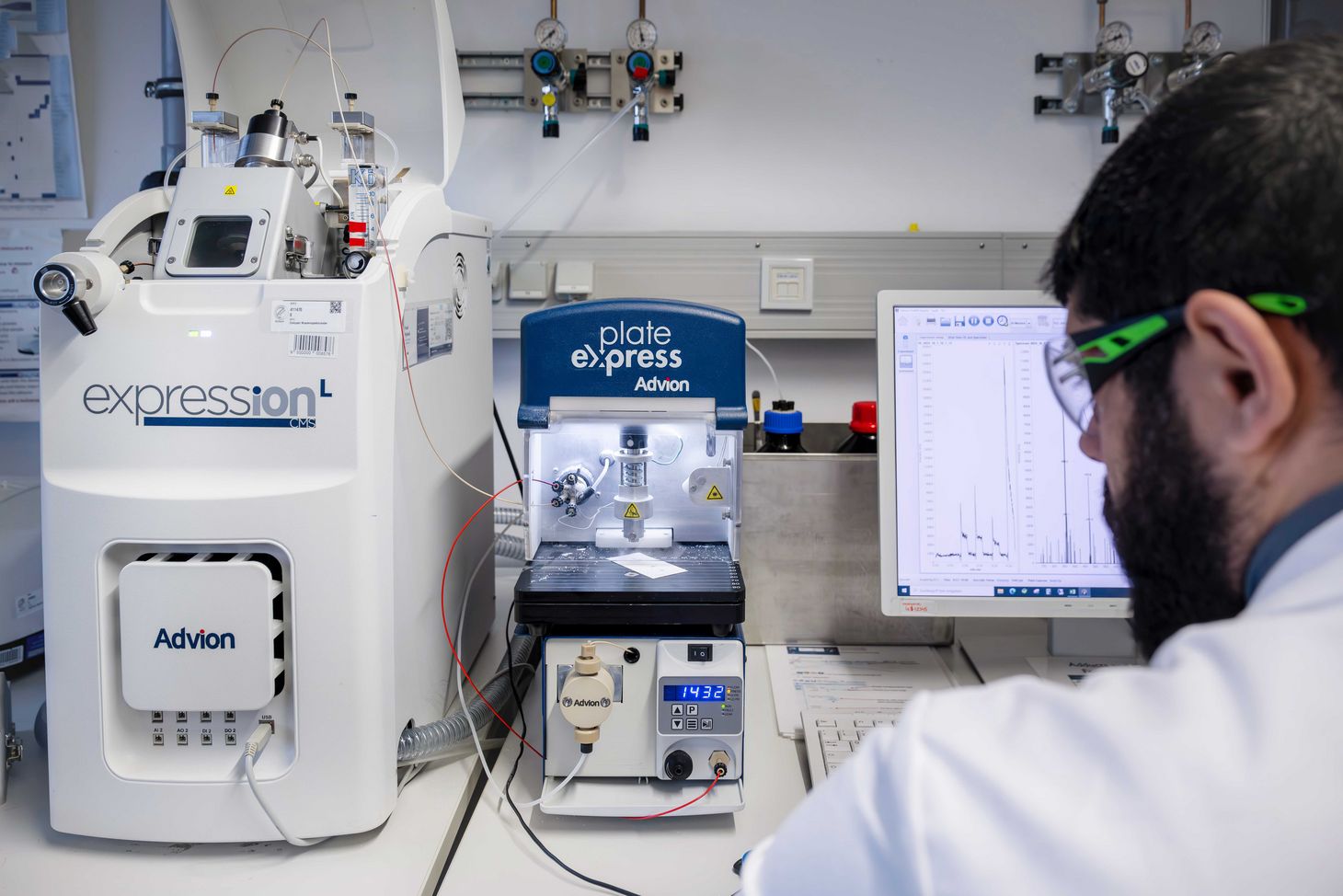
What could go wrong during the project?
Quite a bit, I’m afraid. I communicated these aspects in the project proposal, and I also informed the Foundation—I can give no guarantee that the reaction will work. On the other hand, no one has yet presented me with a fundamental reason why it shouldn’t. I’m an optimist and will do everything I can to make it happen. I also believe that the higher we aim, the more we achieve. Even if we don’t quite reach our targets, we’ll always learn something. Or we’ll discover another interesting reaction.
What does it take for a research endeavour like this to succeed?
A good idea. But the people who work on the idea are at least as important. Thanks to the Werner Siemens Foundation, we’re able to put together a superlative team: a group of five to ten people who will focus on the topic for the next ten years. My job is to find clever, creative and bold minds—and to hire them. Because trying to do something that’s never been done before comes with a fundamental problem.
What would that be?
We humans tend towards living in herds. We like sitting at the same campfire, singing the same songs and drinking the same drink. That’s our nature. In my research group, most team members are studying asymmetric organocatalysis; they celebrate their successes and publish excellent papers. But if someone comes along and works on a completely new topic, it can very quickly get very lonely. Researchers who do that need a robust kind of mentality.
“I wasn’t thinking about winning the Nobel Prize.”
Not all too long ago, asymmetric organocatalysis was completely new. You received the 2021 Nobel Prize in Chemistry for developing this process. When you first saw that small organic molecules like amino acids can be used as catalysts, were you aware that you had hit upon something big?
I still remember exactly how I did that experiment. It was about twenty-five years ago and I had just started an assistant professorship at Scripps Research Institute in Southern California. It worked fairly soon, and when I saw it, I thought: “Nice!” And although I wasn’t thinking about winning the Nobel Prize for it, I did hope it might lead to a permanent position. My wife and I had recently married, and soon afterwards our first child was on the way—so a permanent job was really an excellent prospect.
In the end, it brought about much more than a permanent position. Did winning the Nobel Prize change how you research?
2021 was an excellent year for me. We’d just discovered a new type of catalysts that were particularly reactive and selective. They signalled a breakthrough in organocatalysis and were what led to the almost blanket use of this technology in drug production, and even large-scale chemistry. When I was awarded the Nobel Prize, too, that was of course a huge surprise and absolutely wonderful. And I’ll admit to briefly wondering what else I should do. But I also know that I love conducting research with my brilliant colleagues. So, I’m basically back to where I was before.
Does an honour like the Nobel Prize give you the freedom to try wild things like splitting CO2? Or is it more of an inhibition, because you could risk your reputation as a successful chemist?
A certain sense of risk is there, a tingling sensation, a bit like with the discovery of organocatalysis. I also had the same thoughts—why am I the only one trying, and does every other chemist know it’s a completely mad idea? In the past, I would have never spoken about it in public for fear of losing my reputation. But it’s different today. This whole project has taken shape because I’ve been saying in talks for the past few years that the next generation of researchers should be exploring this kind of artificial photosynthesis. Thanks to the Werner Siemens Foundation, I’m now doing it myself. I may fail. But today, as a Nobel laureate, I’m more relaxed. I just think: I have to give it a try.
